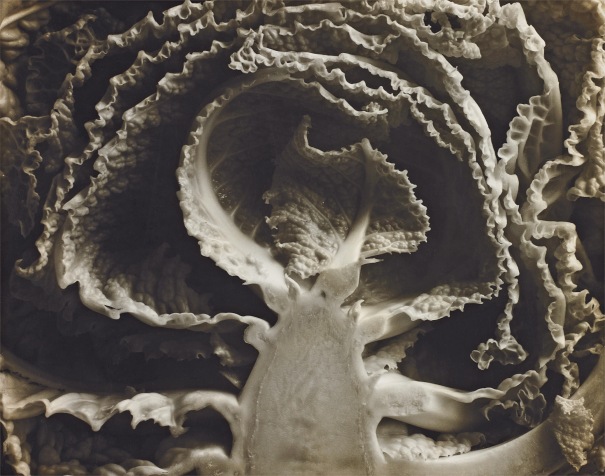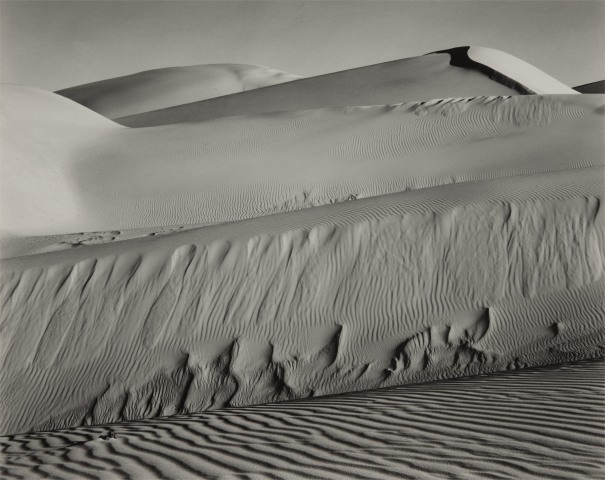Edward Weston Bananas 1930 Gelatin silver print. 7 1/8 x 8 3/4 in. (18.1 x 22.2 cm) Signed, titled and annotated ‘California’ in pencil on the verso.
Provenance From the artist; to a Japanese-American Collector, by decent Private Collection, California Literature Foley, Edward Weston's Gifts to His Sister, p. 44 Catalogue Essay Bananas (lot 196) and lots 197 and 198 come from a Japanese-American colleague of Edward Weston who helped organize three exhibitions of Weston’s work at a pivotal time in Weston’s career, when he started to make his now famous images of fruit, vegetables, shells and nudes. The 1925 exhibition in Japan Town, as it was then known, was one of Weston’s first exhibitions in the United States. The other exhibitions held there in 1927 and 1931 demonstrated the strong interest in his work by those in the Los Angeles Japanese community. In his book on Japanese Photography in America, 1920-1940, Dennis Reed mentions the three exhibitions - all of which were organized by the Shaku-do-sha, a Japanese club of modernist poets, painters and photographers in an area of downtown Los Angeles called “Little Tokyo.” Plaster Works, Los Angeles (lot 198) was taken the same year as that first groundbreaking exhibition. Plaster Works is considered one of Weston's early masterpieces of industrial form, an extension of his famous Rogue River series photographed in 1922. Edward Weston’s photographs of fruit, vegetables and shells, made between 1927 and 1930, mark the epicenter of his work, produced after his influential stays in Mexico in 1923-1924 and 1925-1926. In 1929, Weston moved with his son Brett to Carmel, a bohemian art community next to Monterey in Central California. There he rented Johan Hagemeyer’s summer studio and set up a portrait studio aimed at the tourist trade. On his front porch - “open on three sides and screened at the top by an awning of cheese cloth” Weston prepared and photographed his humble subjects including, as seen in the present lot, bananas. In this classic image, Weston reveals his subject’s vital beauty through the texture and rhythm of form. Weston, the modern master of form, created this image in 1930 at the apex of his seminal work transforming ordinary objects into life-affirming images. The arc of this work started in 1927. Weston wrote in April of that year: "with my mind full of banana forms! How exciting they are to work with! I have two new loves--bananas and shells." Three years later he would return to bananas - "not new to my work; I had done two negatives in 1927, and then was sidetracked. But how much better I can do them now! And what exciting curves, forms, this bunch had." The lot being offered was photographed several days later. Weston described the image in his journal as an "important [negative], a close up, lines radiating from the main stalk, the axis." In Bananas, Weston’s exquisite rendition of the tender surface of the fruit’s bruised skin, as well as his genius in composing that surface to pulsate with the rhythm of the bunch, reveals his quintessential aesthetic response to life itself. The Japanese-Americans were intrigued by Weston's ability to capture the vitality of form, which strongly coincided with their own perspectives. It is not a coincidence that all three images offered here are form driven, including the most famous example of Weston's eroded rock series (lot 197). Read More
Edward Weston Bananas 1930 Gelatin silver print. 7 1/8 x 8 3/4 in. (18.1 x 22.2 cm) Signed, titled and annotated ‘California’ in pencil on the verso.
Provenance From the artist; to a Japanese-American Collector, by decent Private Collection, California Literature Foley, Edward Weston's Gifts to His Sister, p. 44 Catalogue Essay Bananas (lot 196) and lots 197 and 198 come from a Japanese-American colleague of Edward Weston who helped organize three exhibitions of Weston’s work at a pivotal time in Weston’s career, when he started to make his now famous images of fruit, vegetables, shells and nudes. The 1925 exhibition in Japan Town, as it was then known, was one of Weston’s first exhibitions in the United States. The other exhibitions held there in 1927 and 1931 demonstrated the strong interest in his work by those in the Los Angeles Japanese community. In his book on Japanese Photography in America, 1920-1940, Dennis Reed mentions the three exhibitions - all of which were organized by the Shaku-do-sha, a Japanese club of modernist poets, painters and photographers in an area of downtown Los Angeles called “Little Tokyo.” Plaster Works, Los Angeles (lot 198) was taken the same year as that first groundbreaking exhibition. Plaster Works is considered one of Weston's early masterpieces of industrial form, an extension of his famous Rogue River series photographed in 1922. Edward Weston’s photographs of fruit, vegetables and shells, made between 1927 and 1930, mark the epicenter of his work, produced after his influential stays in Mexico in 1923-1924 and 1925-1926. In 1929, Weston moved with his son Brett to Carmel, a bohemian art community next to Monterey in Central California. There he rented Johan Hagemeyer’s summer studio and set up a portrait studio aimed at the tourist trade. On his front porch - “open on three sides and screened at the top by an awning of cheese cloth” Weston prepared and photographed his humble subjects including, as seen in the present lot, bananas. In this classic image, Weston reveals his subject’s vital beauty through the texture and rhythm of form. Weston, the modern master of form, created this image in 1930 at the apex of his seminal work transforming ordinary objects into life-affirming images. The arc of this work started in 1927. Weston wrote in April of that year: "with my mind full of banana forms! How exciting they are to work with! I have two new loves--bananas and shells." Three years later he would return to bananas - "not new to my work; I had done two negatives in 1927, and then was sidetracked. But how much better I can do them now! And what exciting curves, forms, this bunch had." The lot being offered was photographed several days later. Weston described the image in his journal as an "important [negative], a close up, lines radiating from the main stalk, the axis." In Bananas, Weston’s exquisite rendition of the tender surface of the fruit’s bruised skin, as well as his genius in composing that surface to pulsate with the rhythm of the bunch, reveals his quintessential aesthetic response to life itself. The Japanese-Americans were intrigued by Weston's ability to capture the vitality of form, which strongly coincided with their own perspectives. It is not a coincidence that all three images offered here are form driven, including the most famous example of Weston's eroded rock series (lot 197). Read More
.jpg)







Testen Sie LotSearch und seine Premium-Features 7 Tage - ohne Kosten!
Lassen Sie sich automatisch über neue Objekte in kommenden Auktionen benachrichtigen.
Suchauftrag anlegen